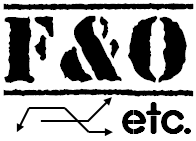|
|
In this article, let us cover the basic details about payoff functions, which are an integral part of understanding Futures, Options and other derivatives trading scenarios.
While one can always find a lot of articles in books and other websites of derivatives, what is missing is the practical step by step guide to constructing and understanding the real scenarios of payoff with considering the net prices, brokerages as well as commissions. These are big gaps which make it almost impractical for anyone to really understand payoff function in real sense. Through this series of articles on payoff functions, I'll try to fill in these gaps for a clear understanding.
Payoff Functions Example Explained
As always, let's start with a basic example:Before you proceed further with this, it is advisable to go through the basic of Option Trading Tutorial: Payoff Functions Explained article series. That set of articles contains very simple language for payoff functions.
What we learn from those basic details is that in case of a net BUY where some money flows out from an options trader's pocket, the payoff function graph has to be shifted DOWN by that much amount. It is assumed to be a kind of loss as it is net outflow of money, hence the graph shifts downwards.
But what happens when there is a SALE and the option trader actually receives money (net inflow)? In that case, you need to shift the same Zero price graph UPWARDS. Since money is received by the option trader, it is considered a kind of profit as it is net inflow of money, hence the graph is shifted upwards.
Consider this example. You short sell GOOGLE stock at $10. As a seller, you receive this $10. Following the steps listed in Options Trading Tutorial Part 5, we first begin with a ZERO price BLUE colored graph which will be as follows:

And then we introduce the price $10 - since we are sellers and going to receive this $10 from this short sale, the Zero price graph will go up by this amount as shown by the PINK colored graph.

So what does this PINK graph tell us?
The place where it crosses the horizontal-axis (or x-axis) is the break-even point i.e. on either side of break-even point there will be profit and loss areas. In case of the above example, the break even point is at $10 as that is where the PINK payoff function crosses the horizontal axis. So below $10, there is profit area which is indicated by YELLOW colored up-direction arrows. Above $10, there is loss area which is indicated by ORANGE colored downward arrows.
This means that if the stock price goes below $10, the short seller makes profit. The lower it goes below $10, the more profitable it is for the short seller. On the other hand, if the stock price goes above $10, the short seller makes a loss. The higher it goes above $10, the more loss he makes.
This is the magic of payoff functions. Whether you go short or go long (sell or buy), the payoff functions clearly define your profit and loss regions in a picture format.
Now, lets add some more practical costs of trading because nothing in this world comes for free. Whenever you trade, you have to pay brokerage charges and this should add to your cost as NEGTIVE (its a net outflow from your side). Whether you Buy or Sell, you end up paying the brokerage and commissions from your own pocket. Hence, irrespective of LONG or SHORT position you take, you must take this brokerage amount as negative.
Assuming that you pay an average of $1 as total brokerage for getting into ($0.5) and exiting ($0.5) from this trade, this cost needs to be accounted for. So the PINK colored payoff function graph should now be shifted downwards by $1, leading to the GREEN colored net payoff function for this short sale trade. Here is how it looks:

Again to repeat the step by step procedure to construct the Payoff Function for any trading position:
1) Start with a ZERO Price graph - assume that the traded commodity (options, futures, stocks) is available for ZERO price and draw a payoff function for the same (BLUE colored)
2) Consider the NET price (+ for net receipts and - for net outflows) and shift the ZERO priced payoff function accordingly (Upwards if net receivables, Downwards if net outflows) to get the PINK colored graph with prices
3) Consider the NET brokerage and commissions you pay for getting into (X) and getting out (Y) of trade (Total = X+Y). Since brokerage is always a cost, it is always taken as NEGATIVE outflow and hence the PINK colored graph should be shifted DOWNWARDS with the total (X+Y) brokerage amount. That leads us to the GREEN colored graph with brokerage and commission cost also considered.
The above summarizes the simple steps required for constructing the payoff functions for any kinds of trades.
Next Step - what do you do if you have multiple positions on the same stock? Suppose you bought 1 share of GOOGLE (Long Position) by paying $10 on 1 January and after 4 days you Sold 1 share of GOOGLE (short Position) at price of $14? How do you handle such multiple positions to arrive at the Net payoff functions? To see the answer, let's now head on to our next topic The Mathematics of Payoff Functions

0 Comments: Post your Comments
Wish you all profitable derivatives trading and investing activities with safety! = = Post a Comment